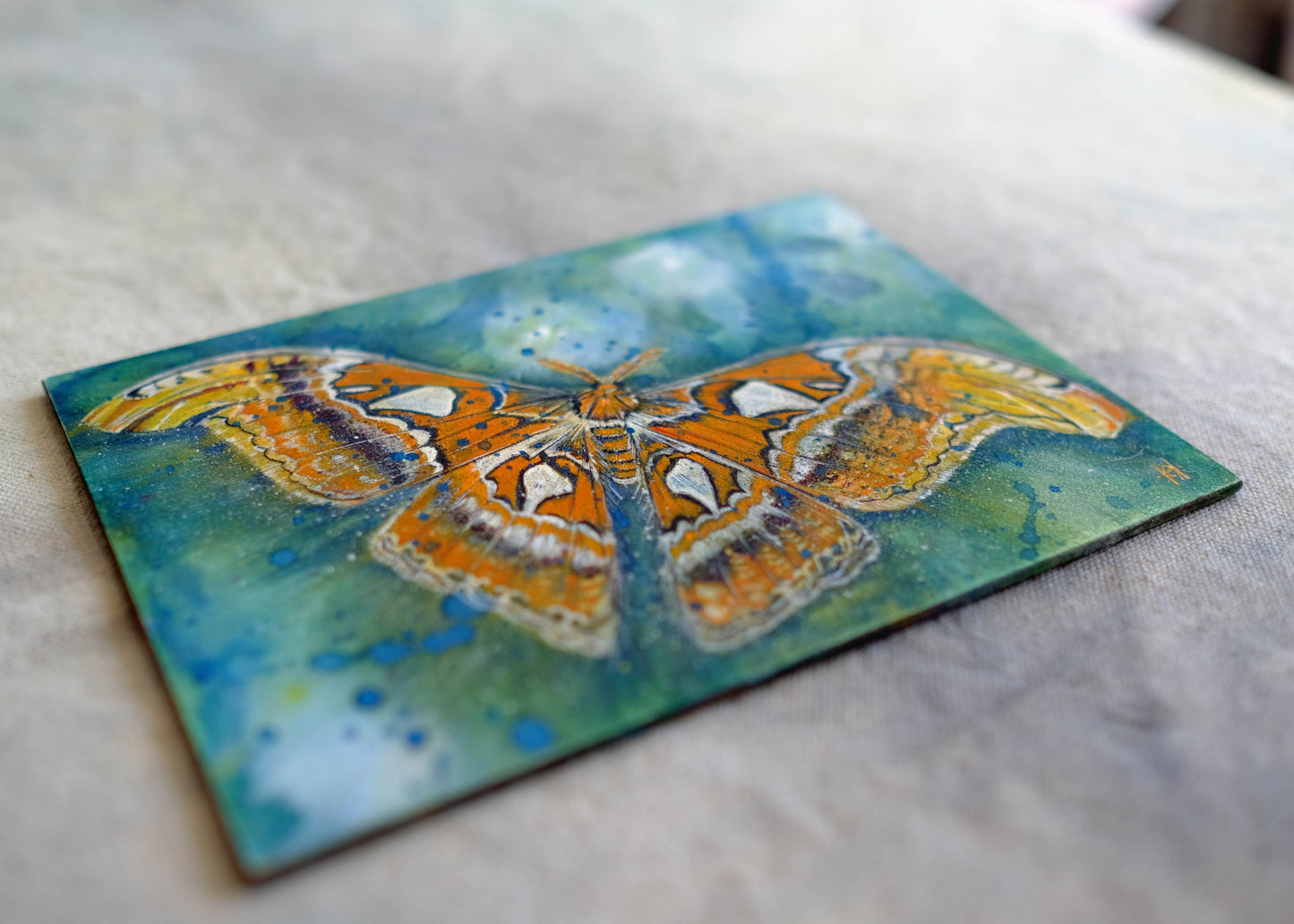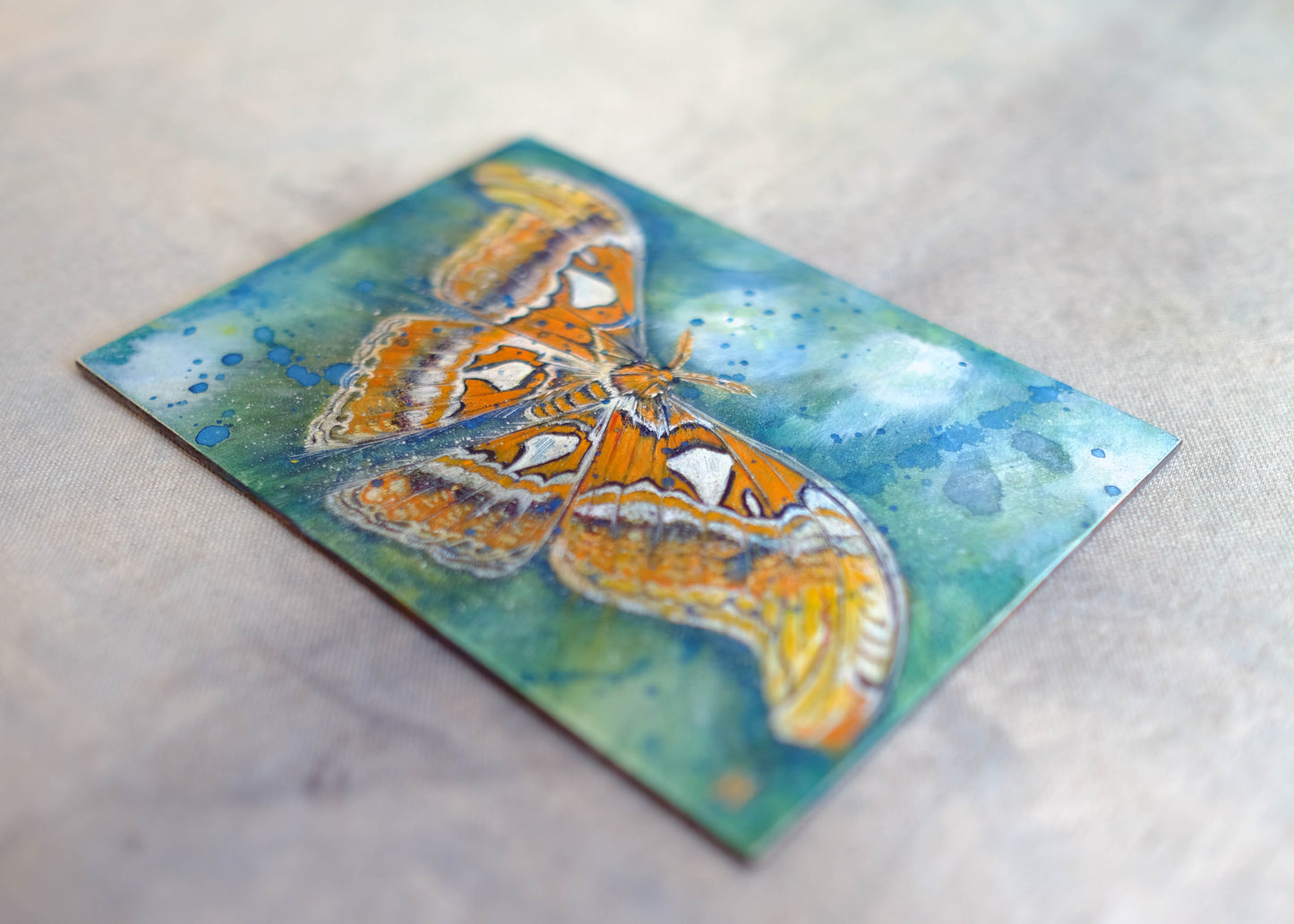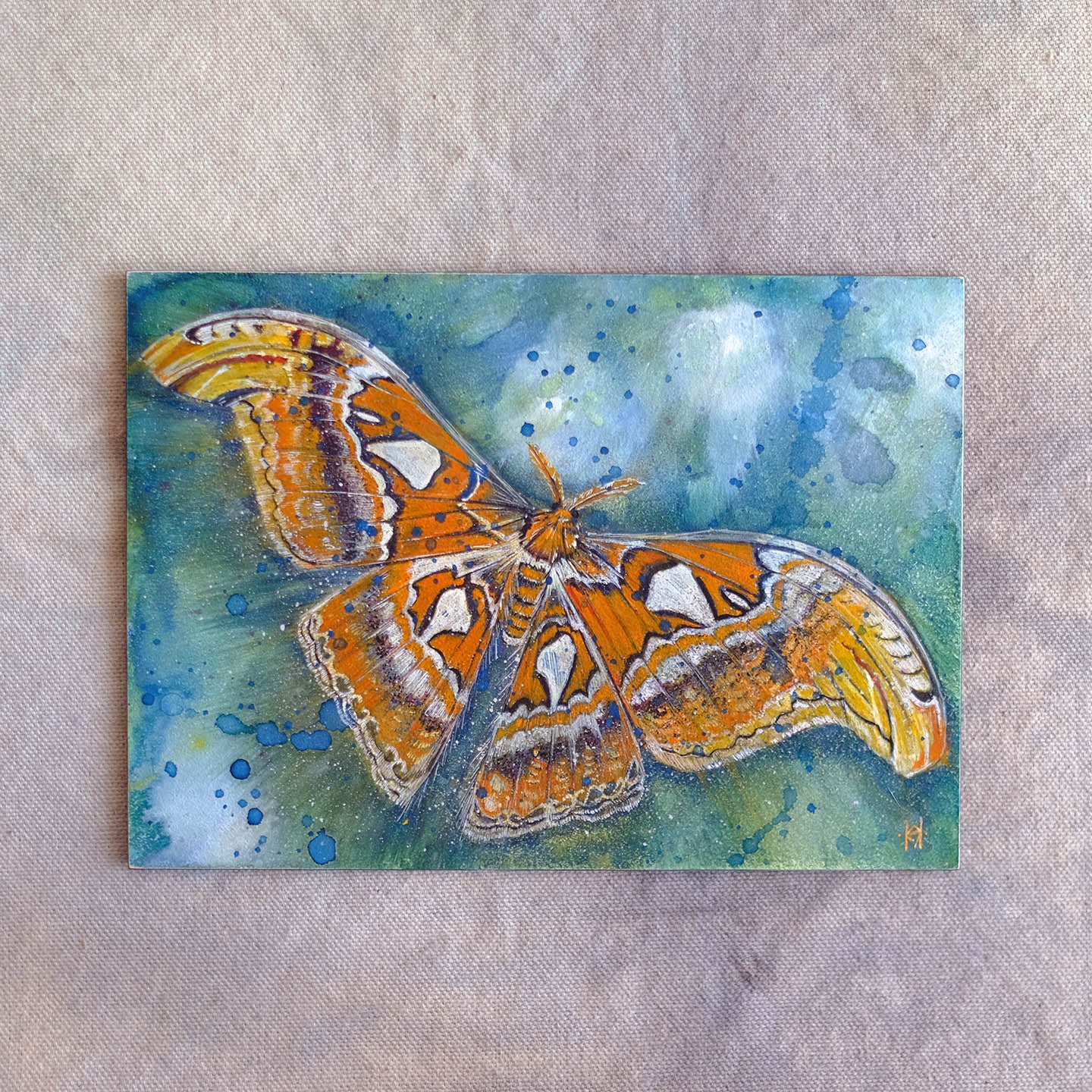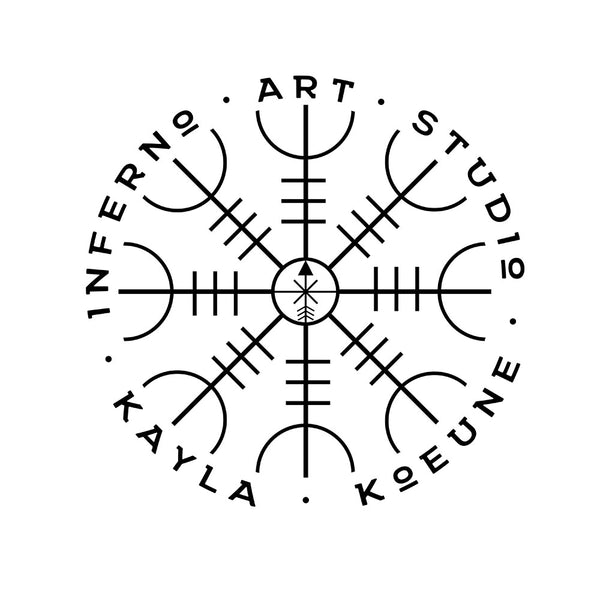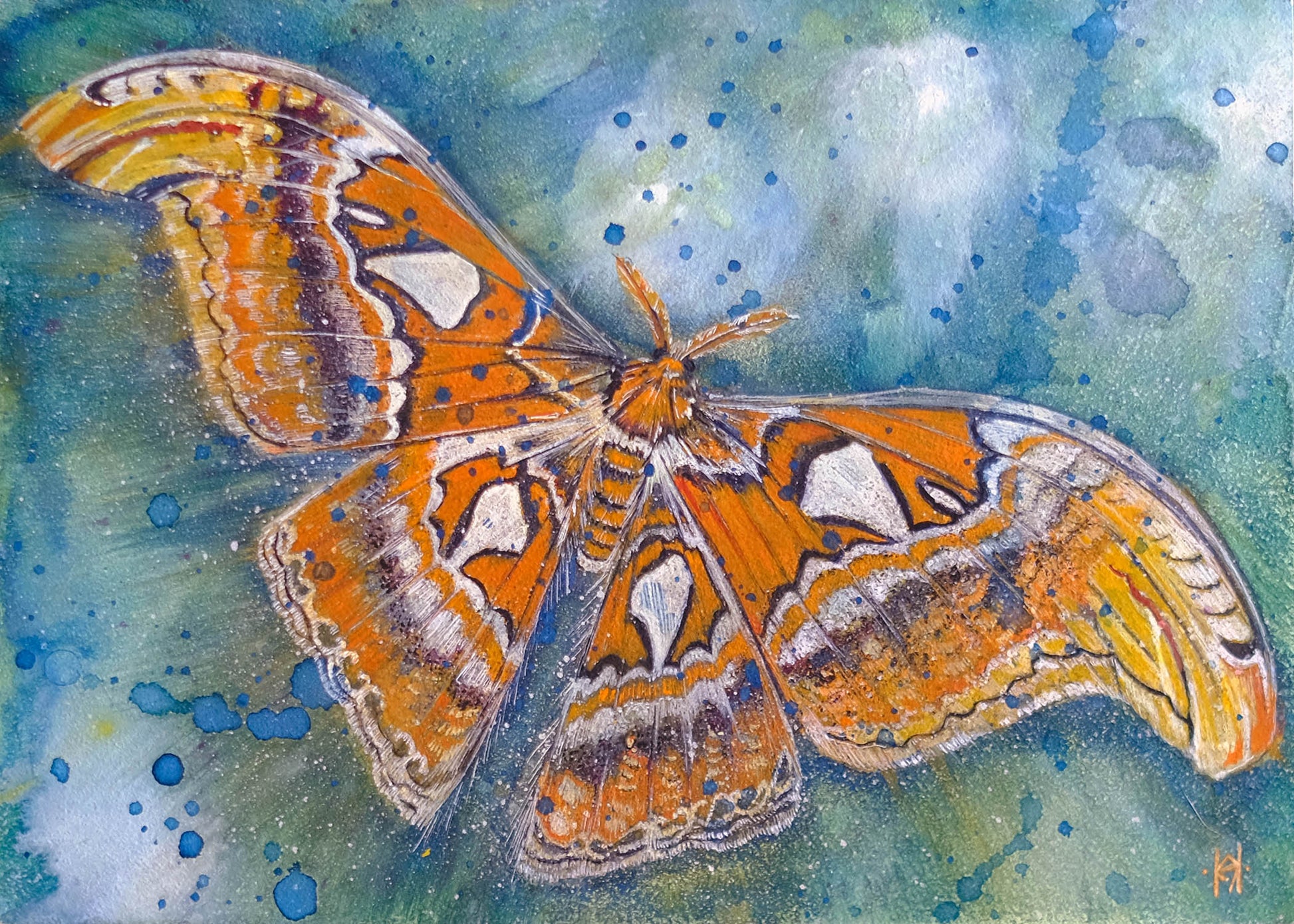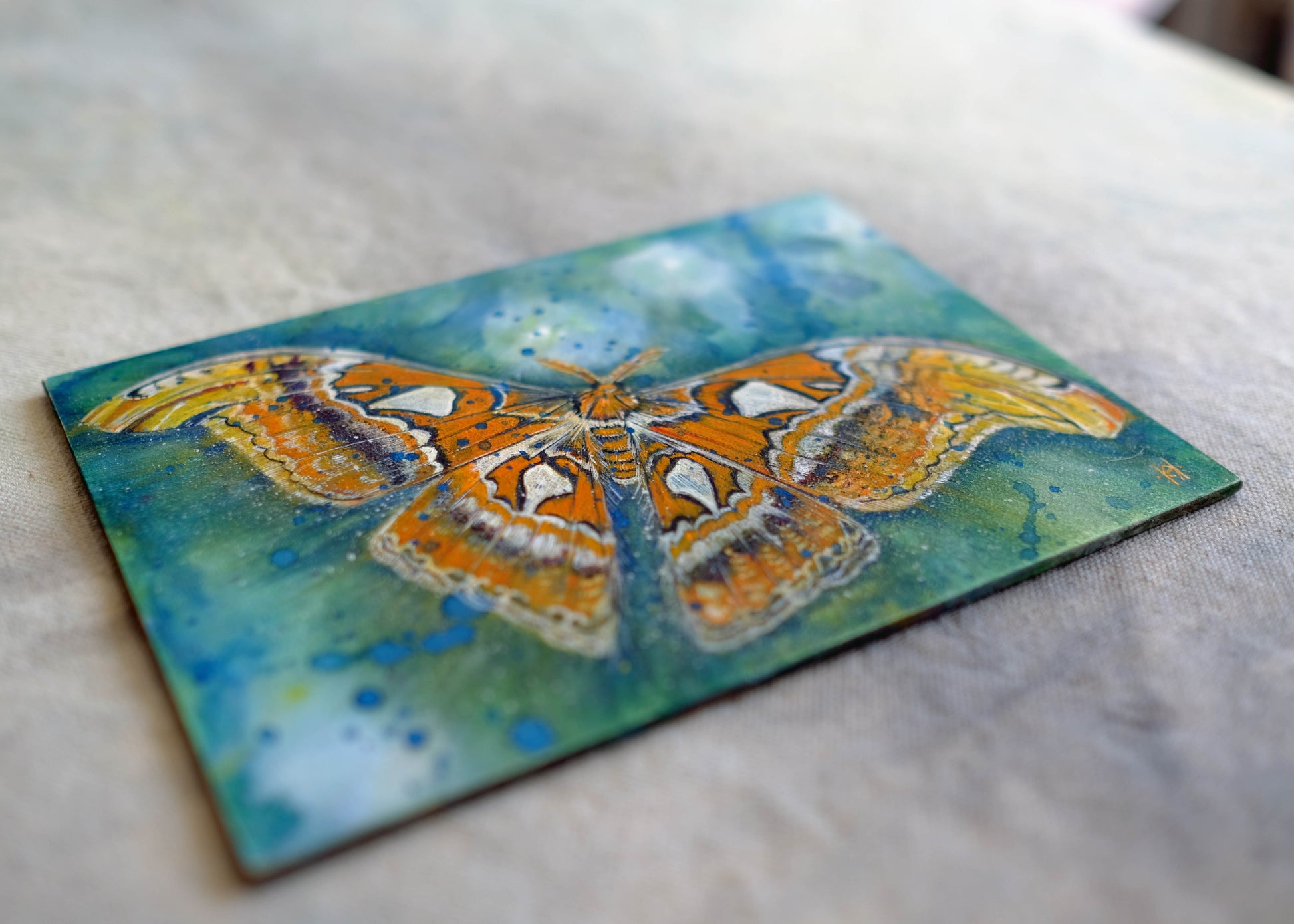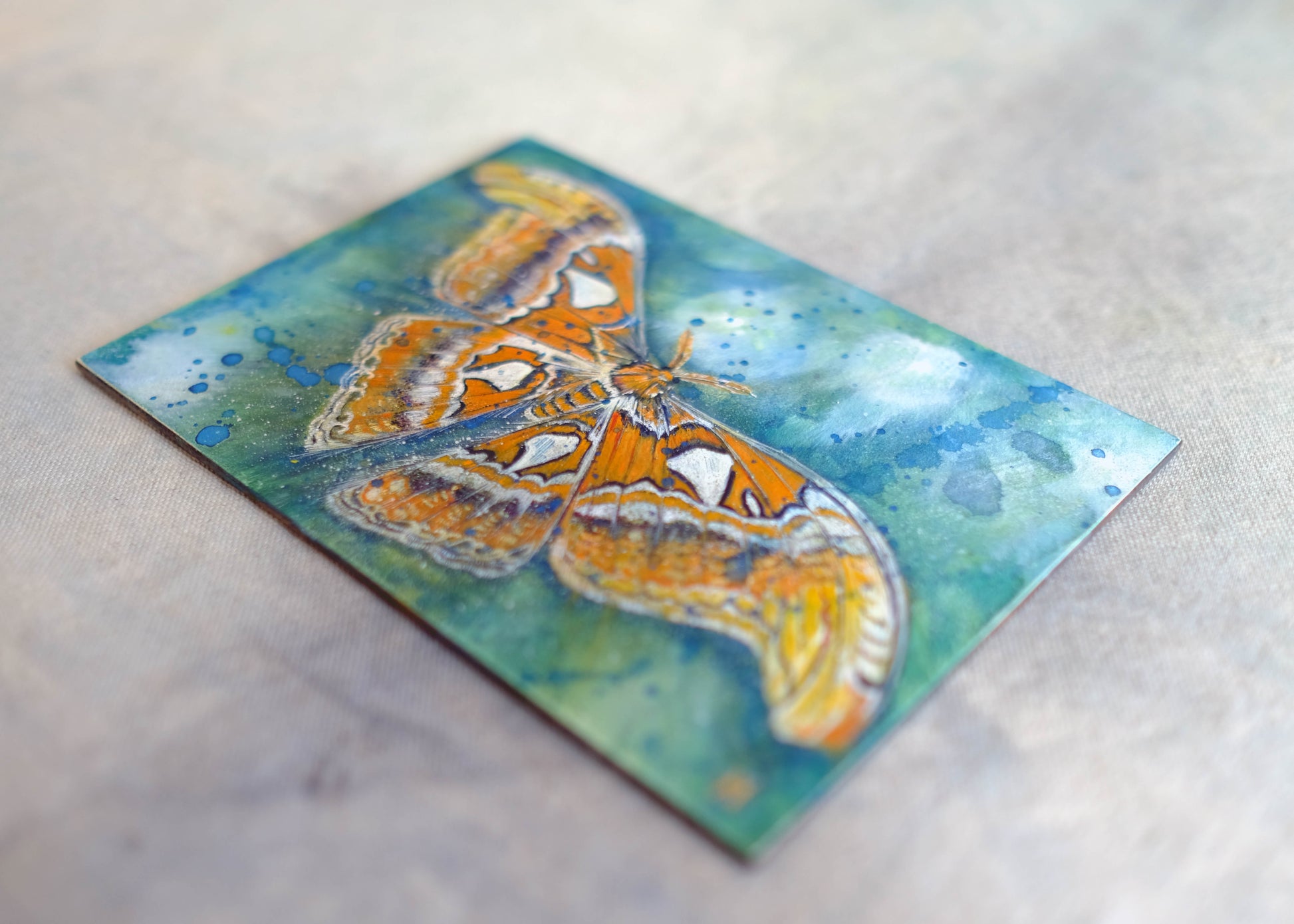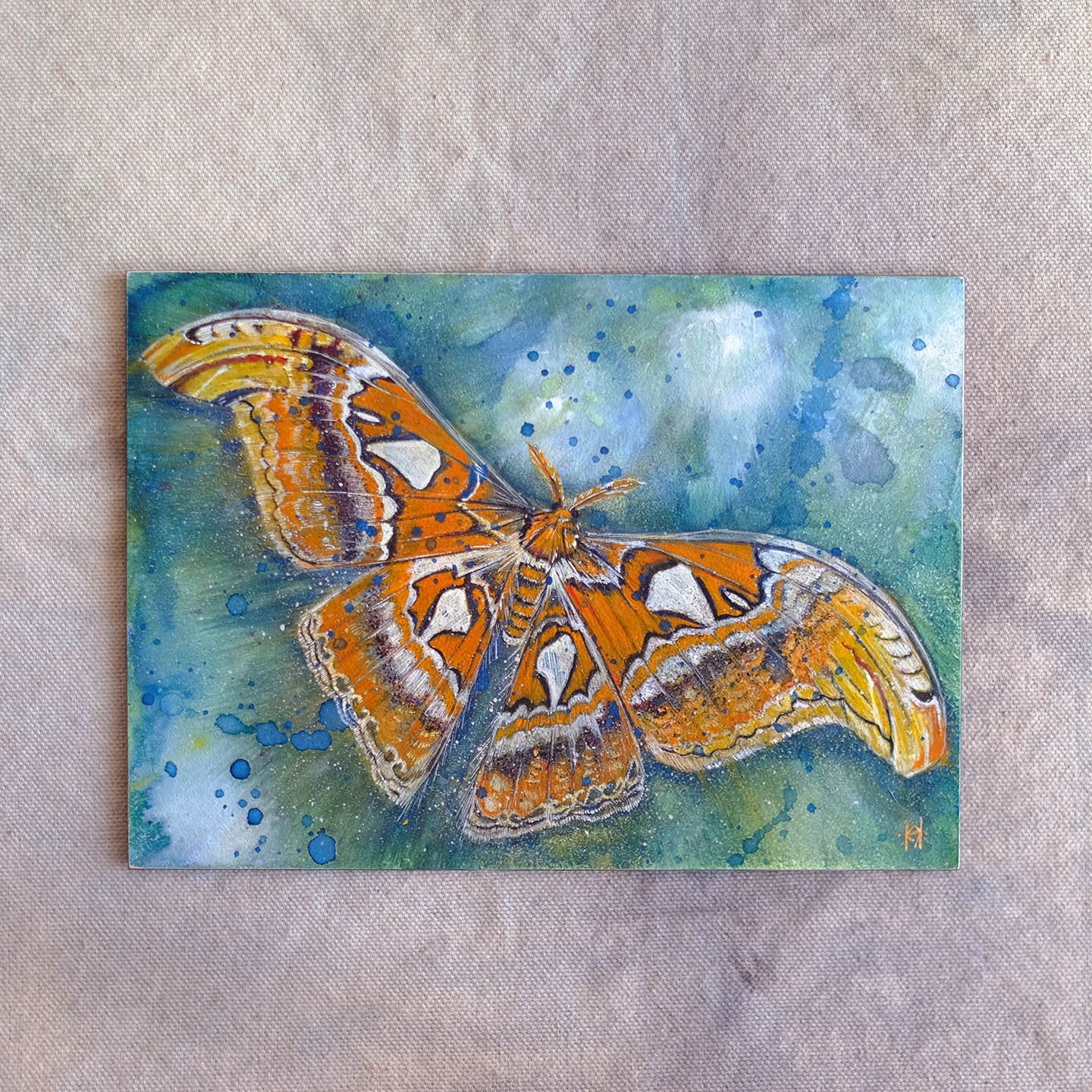Kayla Koeune Art
Attacus Atlas Moth
Attacus Atlas Moth
Couldn't load pickup availability
"Atlas moths are perhaps most famous for the markings on the upper corner of their wings, which bear an uncanny resemblance to cobra heads (in profile). While not all entomologists are convinced of that visual mimicry, there is some convincing evidence. Cobras live in the same part of the world as these moths, and the moth’s main predators—birds and lizards—are visual hunters. Plus, species related to the Atlas moth have similar but less defined versions of the snake’s head, showing a pattern that could have been fine-tuned by natural selection.
In addition to the markings, the wings of the Atlas moth contain translucent areas that may function as “eyespots.” These false eyes could not only startle predators, but could also divert attention from more vulnerable parts of the moth’s body. If, say, a particularly stubborn predator decides to attack the eyespots, damage to the wings would not be as catastrophic as damage to the moth’s head or body. In the bird-eat-bug world, a little ruse can mean the difference between life and death."- https://www.calacademy.org/explore-science/atlas-moth
Like all my art this is part of my art for good project and a percentage of the proceeds go to the Pollinator Partnership. I chose this organization for this painting as I was inspired by my friends give back project with Moth and Myth.
(Pollinator Partnership works with diverse stakeholders representing various perspectives with the goal of creating positive change for pollinators. We work with farmers, gardeners, land managers, scientists, and industry to develop tools and programs that help keep pollinators safe from pesticides, habitat loss, climate change, and other threats.)
Share

